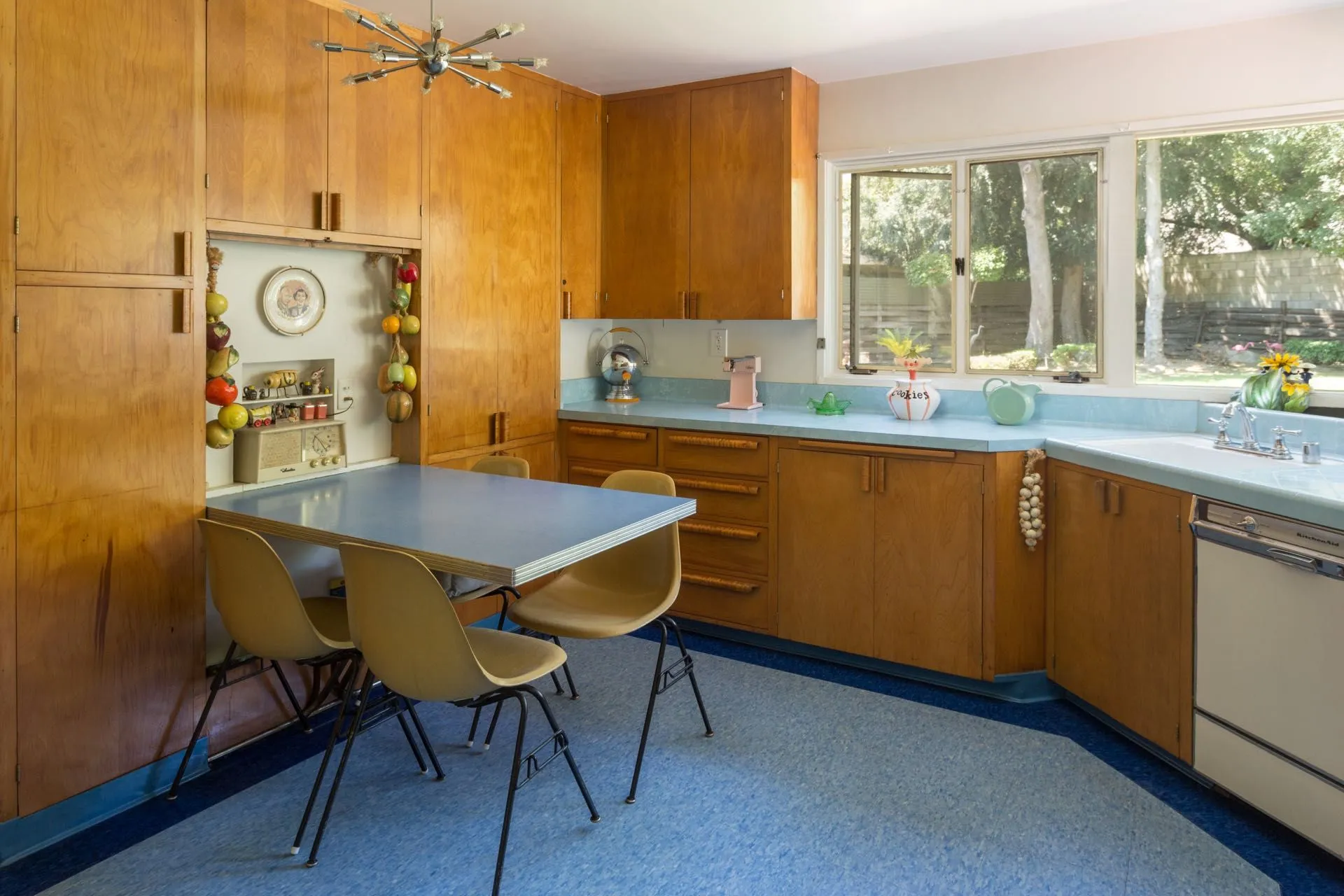Embracing Retro Kitchen Design
Retro kitchen design offers a delightful trip back in time, evoking a sense of nostalgia and charm. It’s more than just a trend; it’s a celebration of a bygone era, known for its clean lines, vibrant colors, and functional aesthetics. The goal is to create a space that’s both visually appealing and practical, blending the best of the past with modern-day convenience. From the sleek appliances to the bold color choices, every element contributes to the overall retro vibe. Successfully designing a retro kitchen involves careful consideration of various elements, including color schemes, furniture, appliances, and accessories. The beauty lies in the details, so choosing the right elements that harmonize and create a cohesive and inviting space is crucial. With a bit of planning and a touch of creativity, you can transform your kitchen into a stylish and functional retro haven, perfect for cooking, dining, and entertaining.
The Allure of Mid-Century Modern
Mid-Century Modern (MCM) is a dominant influence in retro kitchen design, characterized by its organic shapes, minimalist approach, and emphasis on functionality. This style, popular from the mid-1940s to the late 1960s, features a harmonious blend of natural materials like wood and sleek, man-made materials such as Formica and steel. MCM design favors simplicity, with clean lines and a clutter-free environment. It’s known for its practicality, with an emphasis on storage solutions and efficient use of space. The aesthetic often incorporates geometric patterns and vibrant colors, creating a cheerful and inviting atmosphere. It also emphasizes a connection with nature, often integrating elements of the outdoors into the interior design. The enduring appeal of MCM lies in its timeless elegance and adaptability, making it a perfect choice for those seeking a stylish and functional kitchen design.
Key Features of Mid-Century Modern Decor
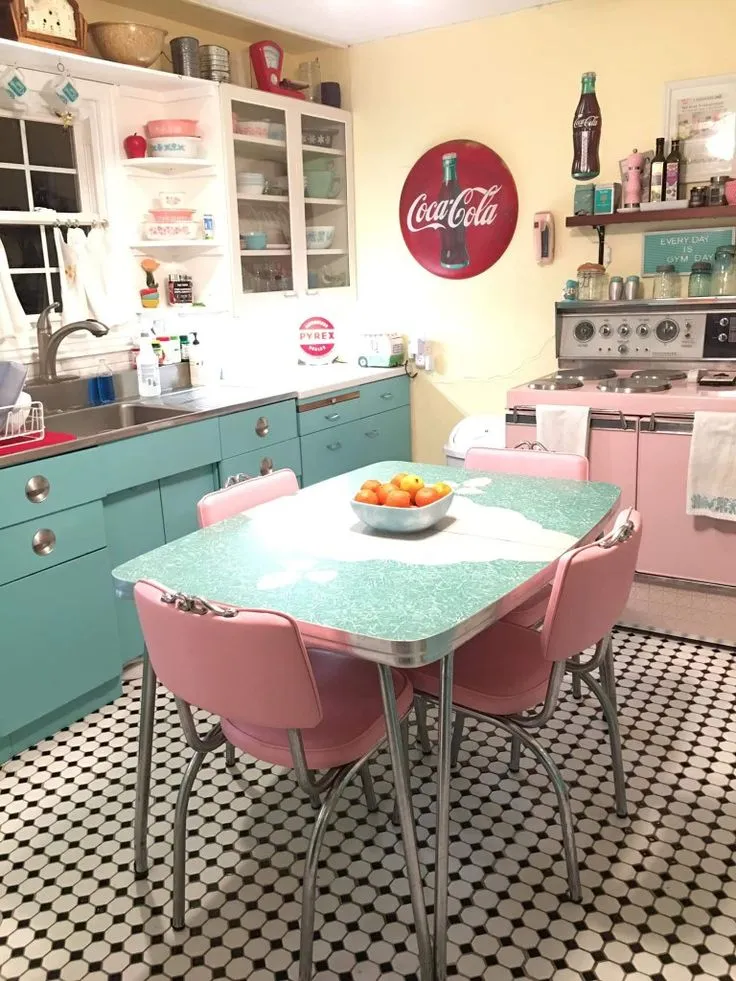
Mid-Century Modern decor is defined by specific features that set it apart. These include clean, simple lines and a lack of unnecessary ornamentation. Natural materials, particularly wood in various finishes, are prominently featured, often combined with sleek, industrial elements like metal and glass. Functionality is a core principle; the design prioritizes practicality and efficient use of space, often incorporating built-in storage solutions. Color palettes lean towards a combination of earthy tones (such as walnut and olive green) and vibrant accents (like turquoise, mustard yellow, and coral). Geometric patterns are frequently used in textiles, wallpaper, and accessories, adding visual interest. The furniture pieces often feature iconic designs, with tapered legs and organic shapes. Lighting plays a crucial role in the aesthetic, often incorporating statement pieces. By incorporating these key features, you can successfully capture the essence of MCM style.
Color Schemes for a Retro Kitchen
Color is fundamental to retro kitchen design. Bold and vibrant hues create a cheerful and energetic atmosphere, while softer tones can provide a more relaxed and inviting ambiance. When choosing a color scheme, consider the overall mood you want to create and the size and lighting of your kitchen. For smaller kitchens, lighter colors can make the space feel larger and brighter, while larger kitchens can handle richer, darker tones. Mixing and matching colors is a hallmark of retro design, but it’s essential to maintain a balance. Using a primary color as a base and adding accent colors can prevent the space from feeling overwhelming. Consider the interplay of the colors with other elements, such as appliances and furniture. The color palette should complement all the elements to create a cohesive and visually appealing design. Color choices also reflect a distinct era, so by carefully selecting a color palette, you can transport your kitchen back in time and infuse it with the charm of a bygone era.
Popular Color Combinations
Several color combinations are synonymous with retro kitchen design. Pairing turquoise or teal with white or cream creates a fresh and bright look that is both classic and timeless. Another popular combination involves incorporating bright yellow or mustard with gray or charcoal, adding a touch of warmth and sophistication. For a bolder statement, consider pairing red or coral with black or white, instantly adding drama. Green, from avocado to olive, often combines well with wood tones and earthy accents. These color combinations exemplify the spirit of retro design, providing endless options to personalize your kitchen. Choosing the right combination depends on your preferences and the overall look you wish to achieve. These popular palettes are perfect for creating a stunning retro kitchen, providing inspiration for creating a kitchen that exudes personality and charm.
Iconic Colors of the Era
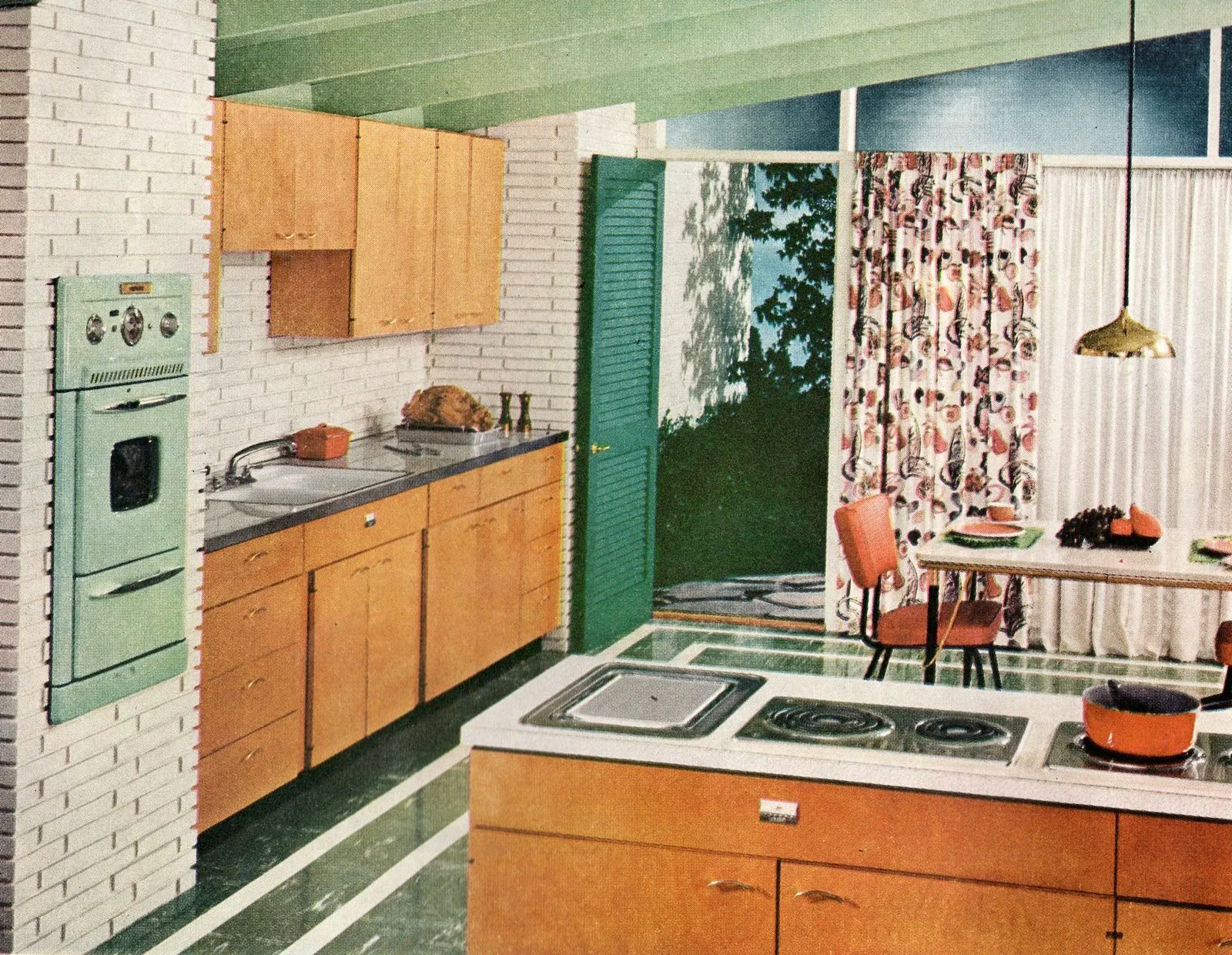
Certain colors are intrinsically linked to the retro era, symbolizing the style’s playful and optimistic spirit. Avocado green and harvest gold were incredibly popular and continue to evoke a sense of nostalgia. These earthy tones are often associated with the 1970s and provide a grounding effect to the space. Turquoise and aqua, frequently paired with white or chrome, offer a refreshing and bright feel. These colors were frequently used in appliances and kitchenware. The era also embraced vibrant shades like cherry red, coral, and sunny yellow, perfect for adding bursts of energy and personality. These iconic colors, when used strategically, can instantly transport your kitchen back in time. Incorporating these colors can help you create an authentic retro kitchen. These classic colors are essential for capturing the essence of retro style, allowing for creative and personalized kitchen designs.
Choosing Retro Kitchen Appliances
Appliances are essential in a retro kitchen, serving as both functional elements and design statements. Retro-style appliances are now available in various colors, sizes, and styles, allowing you to seamlessly integrate the look into your kitchen. Options range from classic, rounded-edge refrigerators to vibrant-colored ovens and cooktops. The choices should complement the overall color scheme and design. Consider appliances that have a distinctive retro aesthetic, such as those with chrome accents, bold colors, or vintage-inspired handles. Not only do retro appliances add visual appeal, but they also offer the latest technological advancements. When choosing appliances, research models that provide the functionality you need while complementing the aesthetic of your retro design. The right appliances will enhance the retro vibe, creating a kitchen that is both functional and visually captivating.
Essential Appliances
Several essential appliances define a retro kitchen, reflecting the style of the era. A retro refrigerator is typically the centerpiece of the kitchen, often featuring rounded edges, bold colors (like red or turquoise), and chrome accents. Retro ovens and cooktops come in various styles, including freestanding ranges and built-in models, frequently with a minimalist design and bright color options. Dishwashers and microwaves can be found in retro styles, incorporating the same design elements as other appliances. In addition to these major appliances, small appliances like toasters, blenders, and coffee makers are essential for completing the retro look. Look for models with rounded edges, vintage-inspired colors, and chrome accents. These appliances play a vital role in the kitchen, so make sure to integrate them into your retro kitchen design.
Where to Find Retro Appliances
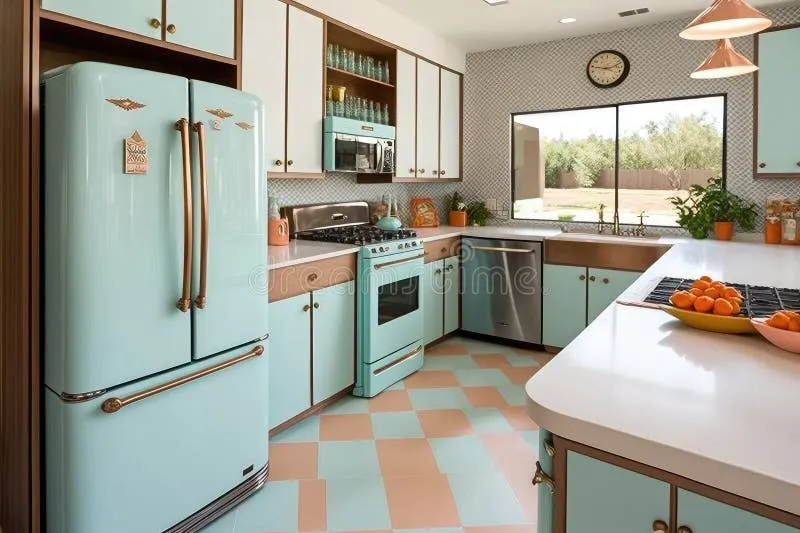
Retro appliances can be found in various places, from specialty retailers to online marketplaces. Many appliance manufacturers now offer retro-style lines, providing modern technology with a vintage aesthetic. Check appliance stores and online retailers for options in various colors and styles. Consider visiting vintage shops and antique stores to find genuine retro appliances, although these may require more maintenance. Online marketplaces offer a vast selection of retro appliances from various sellers, including both new and used items. Before purchasing, be sure to review the product specifications, read reviews, and compare prices. Also, consider the warranty and return policies. Regardless of where you shop, acquiring retro appliances will enhance the kitchen’s overall design. With careful research and planning, you can find appliances that complement the retro design and elevate the kitchen’s overall aesthetic.
Incorporating Retro Furniture
Furniture plays an essential role in creating a retro kitchen design, with specific pieces that reflect the design’s aesthetic and functionality. Consider the various furniture choices, from dining tables and chairs to bar stools and kitchen islands. Furniture selection involves balancing style and practicality, ensuring a cohesive and functional space. Look for pieces with distinctive retro characteristics like tapered legs, sleek lines, and bold colors. Consider the materials, such as wood, metal, and Formica, that were common during the retro era. The furniture should not only complement the overall design but also provide a comfortable and inviting space for dining and socializing. By carefully selecting furniture, you can enhance the retro vibe, creating a kitchen that is both stylish and functional.
Selecting the Right Furniture
When selecting retro furniture for your kitchen, focus on pieces that embody the style of the era. Dining tables should have clean lines, often with a Formica top and wooden or metal legs. Consider round or oval tables to create a sense of intimacy and facilitate easy conversation. Chairs should have a sleek design, with tapered legs and often featuring upholstered seats in bold colors or geometric patterns. Bar stools are a great addition to a retro kitchen, with chrome or wooden legs and comfortable seating options, often in vinyl or leather. For storage, consider a retro-style kitchen island, with built-in storage and a countertop that complements the appliances and color scheme. Look for furniture pieces that are both aesthetically pleasing and practical. Prioritize pieces with distinctive designs, which create a cohesive and inviting space.
Furniture Materials
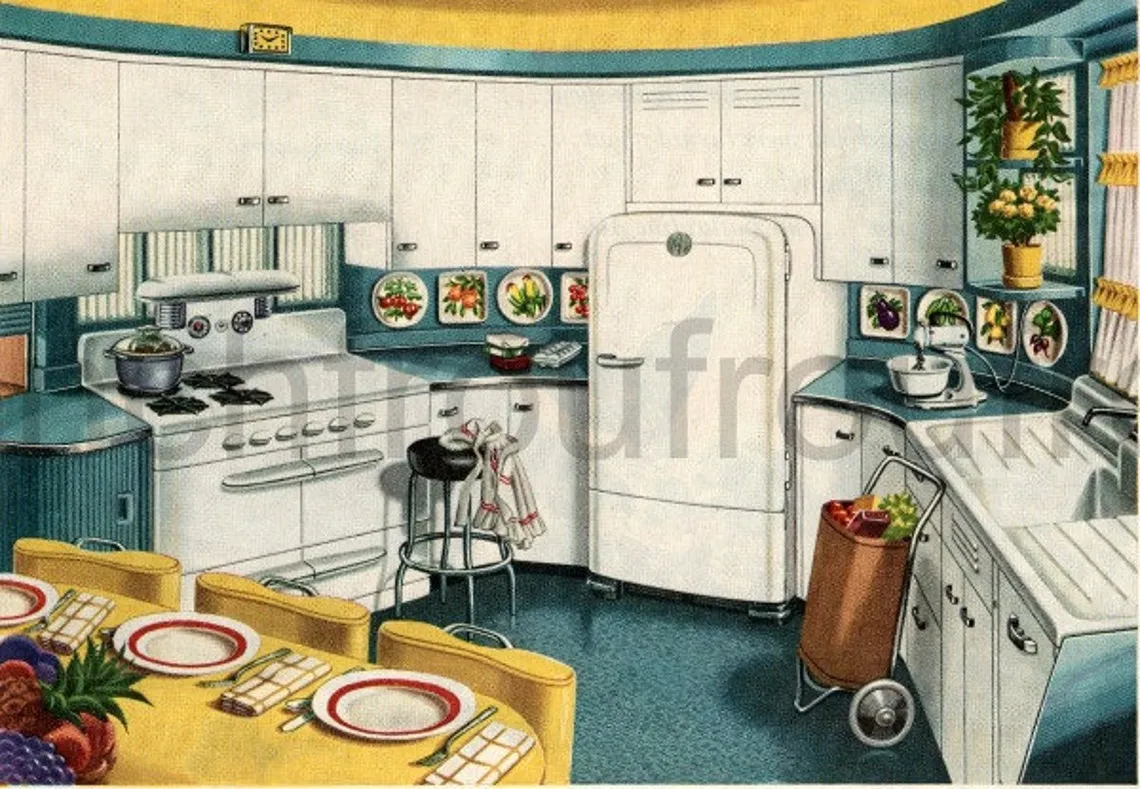
The materials used in retro furniture are central to the style’s aesthetic. Wood, particularly in finishes like walnut and teak, was a popular material, offering warmth and character. Metal, often in chrome or brushed steel, was used for legs, frames, and accents, adding a sleek and modern touch. Formica, a durable and versatile laminate, was frequently used for tabletops and countertops, available in various colors and patterns. Vinyl and leather were common for upholstery, providing a comfortable seating experience in vibrant colors. These materials embody the retro era and are essential for creating an authentic look. They should be chosen carefully to complement the appliances and overall color scheme. By selecting furniture made from these materials, you can effectively capture the essence of retro design.
Accessorizing Your Retro Kitchen
Accessories are the finishing touches that bring a retro kitchen design to life, adding character and personality. From vintage kitchenware to stylish lighting fixtures, these details enhance the overall aesthetic and create a cohesive space. Accessories allow you to showcase your personality and further connect the room to the retro era. Adding the right accessories to your kitchen can make it visually appealing and create a space that reflects the style of a bygone era. Carefully chosen accessories add personality and charm and make your kitchen a unique and inviting space. When selecting accessories, consider the overall color scheme, style, and functionality, making sure that all the pieces complement each other to create a cohesive design.
Vintage Accessories
Vintage accessories are essential for completing a retro kitchen design, adding character and authenticity. Look for items like colorful canisters, vintage salt and pepper shakers, and retro-style dish towels. Consider displaying vintage cookbooks, which adds a touch of nostalgia and serves as a functional design element. Retro-style kitchen gadgets, such as mixers and blenders, can also be functional and add to the overall design. Collectibles like vintage Pyrex dishes and enamelware add pops of color and character. These items can be displayed on open shelves or countertops. Consider visiting antique stores and vintage markets to find unique accessories that complement the overall design. With a careful selection of vintage accessories, you can create a retro kitchen that is not only stylish but also filled with personality and charm.
Lighting and Decor
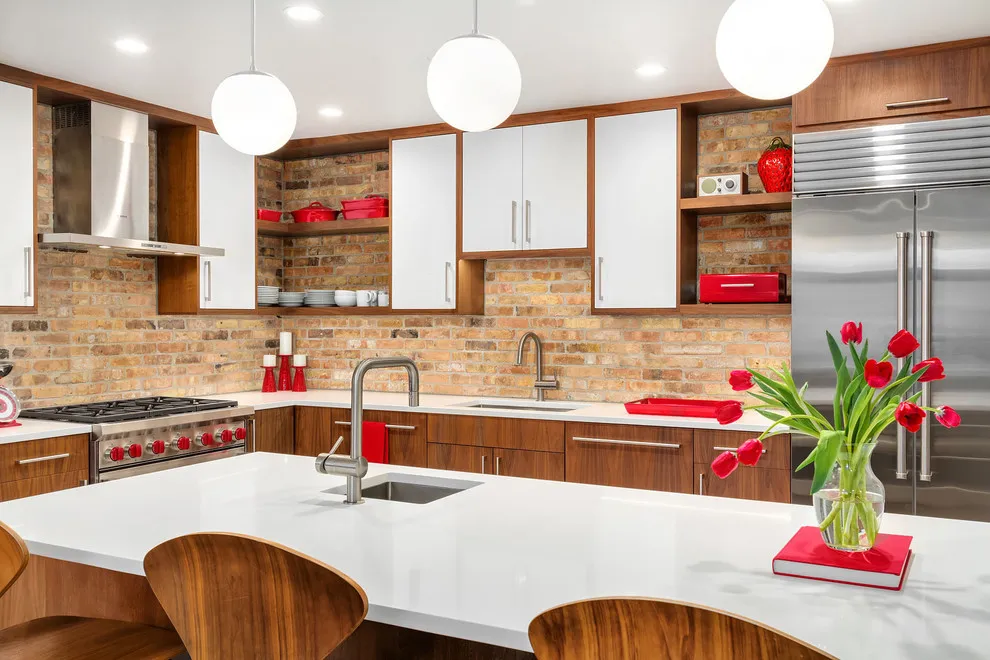
Lighting and decor play a vital role in completing the retro kitchen design. Retro-style lighting fixtures, such as pendant lights with colorful shades, are essential for enhancing the aesthetic. Consider adding a Sputnik chandelier or other geometric fixtures to add a touch of mid-century modern flair. Incorporate a mix of ambient, task, and accent lighting to create a well-lit and functional space. Decorate the kitchen with vintage artwork, such as retro-style posters or advertisements. Consider adding decorative elements that complement the color scheme and design. Wall clocks, clocks with atomic designs, and retro-style wallpaper can also enhance the aesthetic. These finishing touches will make your kitchen both stylish and inviting. By choosing the right lighting and decor, you can create a retro kitchen that is both visually appealing and a functional space.
Retro Kitchen Design Ideas The Final Touch
Retro kitchen design offers a unique opportunity to create a stylish and functional space. By embracing retro design principles, including clean lines, vibrant colors, and practical functionality, you can transform your kitchen into a nostalgic haven. Focus on key elements such as choosing the right color schemes, incorporating retro furniture, and selecting appliances that complement the overall design. Consider the value of vintage accessories and the importance of lighting and decor. By paying attention to details, you can create a cohesive design that brings the retro vision to life. The beauty lies in the details, and with a bit of creativity and planning, you can create a kitchen that will be a delight for years to come. The result will be a kitchen that reflects your personal style, offering a space that is both functional and visually appealing.
